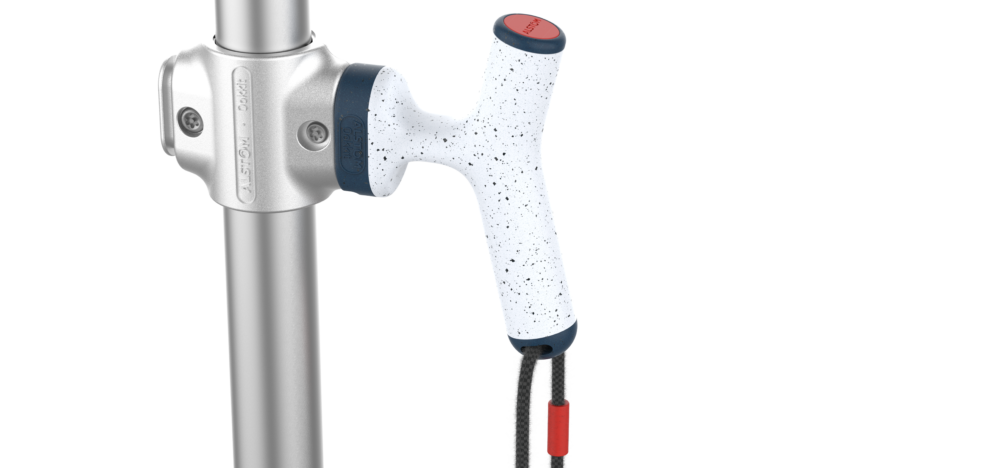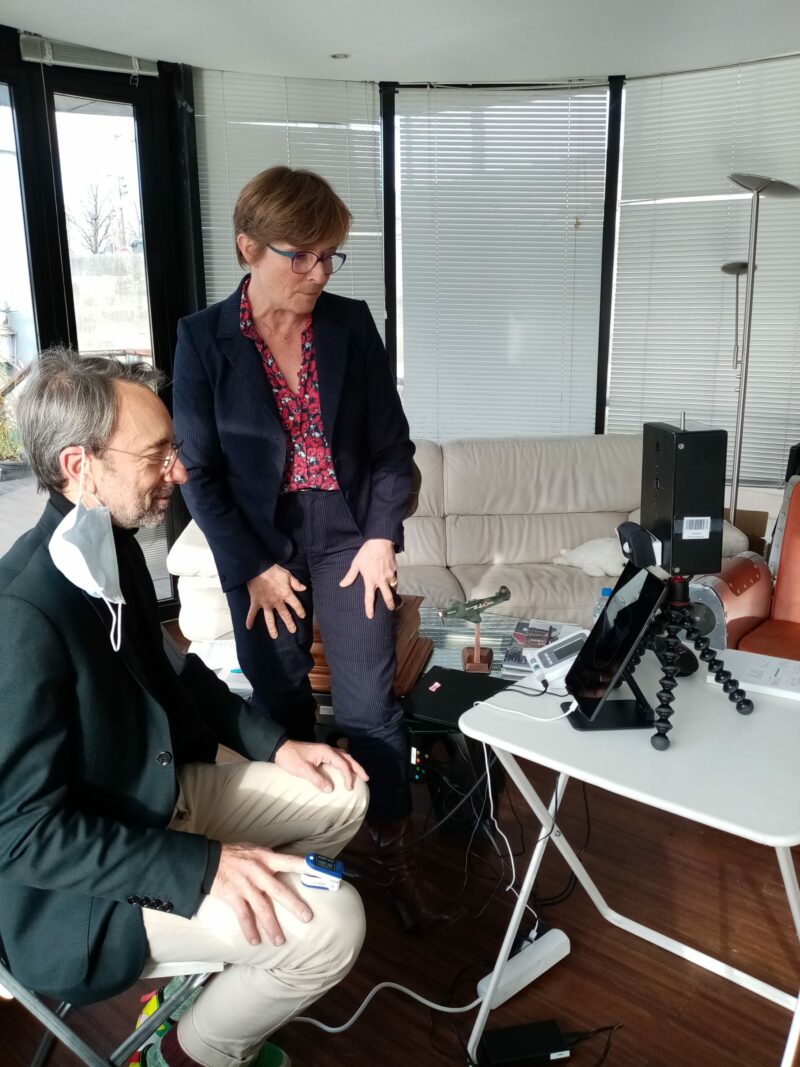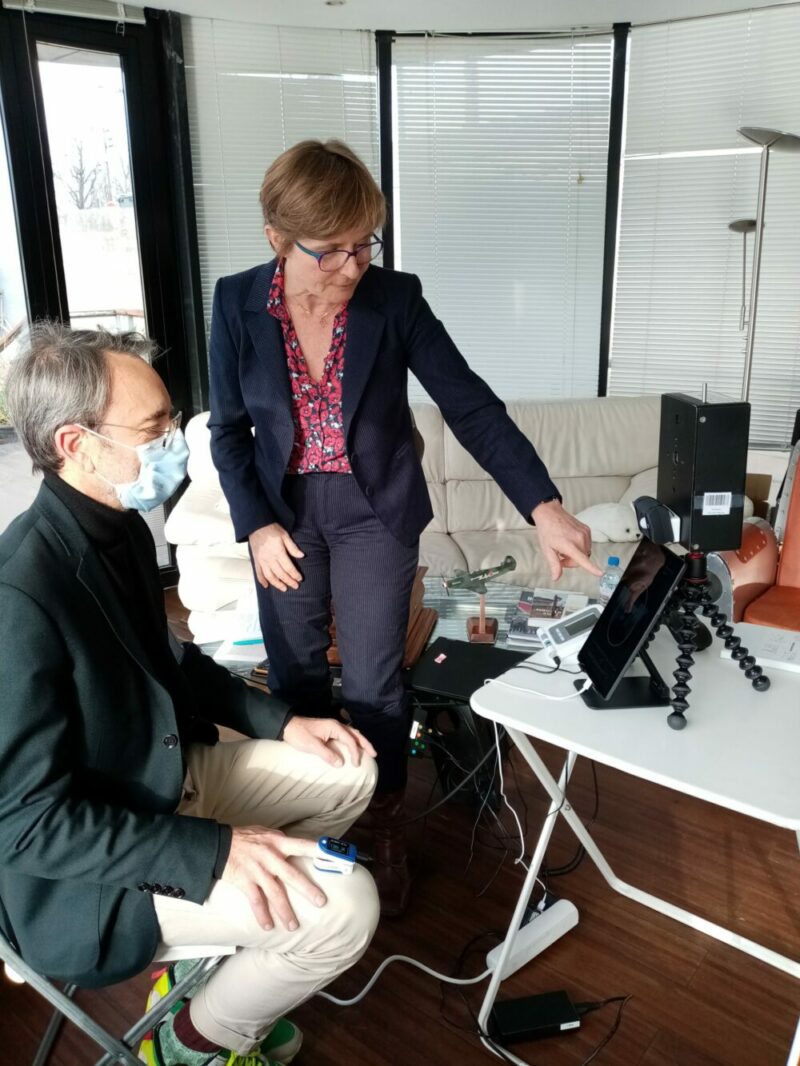💡 Health in transport – Alstom and Valeo making tracks
💡 Health in transport – Alstom and Valeo making tracks
Paris, 22 November 2021: for this third session organised by Futura-Mobility on health conditions in transport, Alstom presented its roadmap and the work of its Healthier Mobility™ group, while Valeo explained and demonstrated its detector for remote measuring of vital signs.
Travelling by bus and train doesn’t represent a high risk if certain precautions are taken. This is one conclusion of studies like the one by Fraunhofer-Gesellschaft, in which Alstom participated, for the German Federal Railway Authority (EBA) and German Centre for Rail Traffic Research (DZSF).
“Transmission of Covid-19, when it does occur, is primarily by airborne transmission of aerosols,” explains Martin Schön, head of AiM (Alstom in Motion) innovation for the DACH region. “The ratio between return air [used air extracted from the passenger compartment, then filtered and mixed with fresh air to save energy for air conditioning] and fresh air is an important parameter, as well as the journey time.”
The duration of journeys is a risk factor for transmission of Covid-19: the longer the journey, the greater the risk; while for shorter trips by local public transport, where the air is generally refreshed more often – the doors of trams, buses and metro carriages are opened and closed more frequently, plus some windows can be partly opened – the risk of disease transmission is lower.
Adds Mr Schön: “Beyond technical measures for treating the air, like ‘pandemic mode’ HVAC software for increased fresh air ratio, or improving filtration with newly developed antiviral PEPA-F™ filter, wearing masks is of course still recommended for travelling safely in public transport.”
For a ‘healthy’ train
In March 2020, Alstom set up Healthier Mobility™, a work group dedicated to finding solutions to protect people (passengers, operations and maintenance staff), restore confidence in transport systems, and offer healthy and sustainable mobility. Covid-19 may certainly have accelerated this initiative, yet it isn’t the only driving force. Indeed, the group was set up by experts at Alstom several years before the current health crisis, in response to requirements in calls to tender and clients’ expectations for their new generation rolling stock. “In addition to capacity, modularity, intermodality, connectivity, and safety… a ‘healthy’ train – that reassures passengers and employees – is the latest concern voiced by our clients,” explains Anne Bigand, director, passenger experience, Alstom.
The Healthier Mobility™ team has consequently targeted five focus areas: cleaning and disinfection; surface treatment; air treatment; contactless mobility solutions; and passenger flow. “We use a special innovation process that is accelerated so we can go faster. All the products undergo rigorous verification, both lab and on site testing,” explains Jorge Pereira, head of Healthier Mobility™.
Today, Alstom is bringing two innovations to the fore: one is Ookkit™, “a concept of small individual handles that clip onto the support bars for standing passengers, so they don’t have to touch the bars directly,” explains Ms Bigand. The handle can also be used for hanging a bag, so keeping it off the ground.

The other innovation is an ‘air curtain’, a solution that can be easily introduced to trains already in service and which creates a natural barrier to protect passengers.
“Filtering air in trains using high efficiency filters – so-called HEPA [high efficiency particulate air] – isn’t common practice because these filters greatly impact the consumption of energy and maintenance work [changing filters] in environments unsuited to this type of filter, even if some operators are starting to request it,” adds Benjamin Kelley, sub system manager, Alstom.
Since the frequency of passengers boarding and alighting in public transport (bus, metro, tram), has a negative impact on the efficiency of ‘air curtain’, this product is designed for longer distance rail journeys – intercity or over three hours.
Contactless terminal for measuring vital signs and pre-diagnosis of Covid-19
Valeo is also working on innovative solutions to protect and reassure the public. Herein lies the appeal of its terminal that delivers rapid and contactless diagnostics for Covid-19 – one of the innovations unveiled by the auto equipment supplier in September 2021 at the IAA Mobility fair in Munich.


Matthieu Remy from Keolis being tested (negative!) for Covid-19, helped by Sylvie Cavelier, Valeo
This contactless testing system, an innovation developed by Valeo’s Innovation, Comfort and Well-Being division, Healthcare division, combines technologies like sensors, big data, and artificial intelligence. Designed to make monitoring people more efficient, safer, and easier, it seeks to facilitate life for medical staff.
“During the first measurement campaign, Valeo’s contactless terminal for diagnosing Covid-19 detected 94% of positive cases of the Alpha variant of Covid,” explains Georges de Pelsemaeker, director of the Start-up & Tech incubator, Thermal Systems hub, Valeo. “This score is over the minimum test reliability of 80 to 97% required by the French National Authority for Health [HAS] to obtain certification and be reimbursed by the social security system.”
To date around 2,000 people have taken part in trials of the terminal, which is currently (November 2021) in the validation phase. Certification should be obtained by June 2022, with an eye to launching the system in 2023.
“Overall, the solution has been welcomed by medical staff and patients,” reports Sylvie Cavelier, THS Health & Well Being Eco System Architect, Valeo. “With this terminal the former will save two to three minutes between each patient, especially since they won’t have to change or clean equipment anymore, or type in vital signs by hand.”
Over time, potential use cases, beyond hospitals and health centres, might include identifying the health status of staff in the workplace or in public spaces.
It might also come as a surprise to some that Valeo, whose core business has always been that of an auto equipment supplier, is developing a healthcare system. But as Mr de Pelsemaeker explains, the business model makes sense: “Not only for this solution for Covid, but every time we measure vital signs. This innovation developed in one sector – health right now, a major concern – can very well be adapted to other sectors, like transport for instance.”
Teamwork
What key factors are needed to drive take-off of innovations like these? Based on the feedback at Healthier Mobility™, Mr Pereira advocates the collaborative innovation approach adopted by Alstom’s R&D teams worldwide. For his part, Georges de Pelsemaeker is convinced of the vital importance of pooling the knowledge of many people.
Future forward
To continue their work, however, both Valeo and Alstom are coming up against one barrier in particular – the absence of health standards in transport. “We need to control the test conditions in order to check the solutions really do work and be able to compare each and every one of them,” explains Benjamin Kelley from Alstom. Indeed, in the current situation, there are countless offerings for tackling Covid-19 in transport, but few means of checking their effectiveness. “We need validation, a stamp on the product to recover client confidence,” adds Mr Kelley.
To speed up this standardisation process, Valeo and Alstom put forward the idea of joining forces to lobby the subject to certification organisations and governments.
“Covid is a problem right now, but it isn’t the first virus and most certainly won’t be the last,” sums up Georges de Pelsemaeker. “So we must prepare now and for the future.”
In a near future, trains might be equipped with ‘air curtains’ and stations and airports with contactless control systems, like today’s photo booths. Perhaps this control technology will also be channelled into cars for measuring driver fatigue – a valuable asset for reducing insurance premiums and ensuring road safety. Watch this space!
Cover photo ©Alstom
Articles similaires:
Il n’y a pas d’article similaire.
